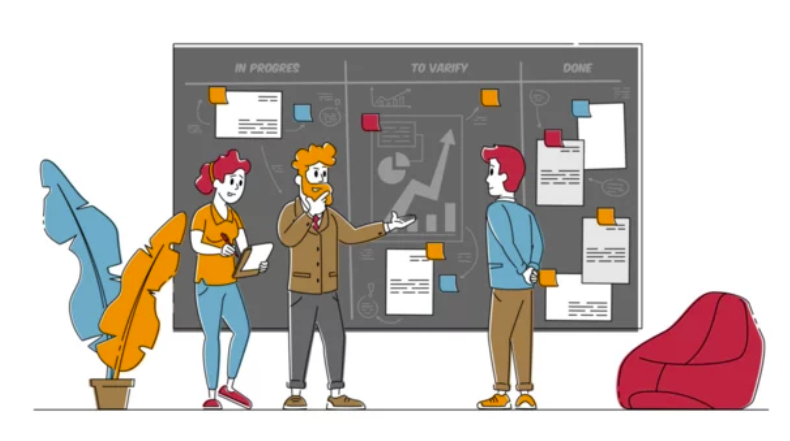
In today’s fast-paced business world, effective project management is essential for ensuring the success of any initiative, whether it’s launching a new product, implementing a system upgrade, or organizing a company-wide event. The right project management methodology can make all the difference between achieving your objectives on time and within budget, or missing deadlines and failing to deliver results. But with so many different approaches available, how do you choose the best one for your project?
Project management methodologies are frameworks that guide how projects are planned, executed, and completed. From traditional models like Waterfall to more dynamic approaches like Agile, each methodology offers its own set of advantages and challenges. Understanding these methodologies can help teams achieve higher efficiency, reduce risks, and improve overall outcomes.
Waterfall Methodology: Sequential and Structured
The Waterfall methodology is one of the oldest and most widely used project management approaches. It’s linear, meaning each phase of the project must be completed before the next one begins. The process flows downwards—like a waterfall—through stages such as requirement gathering, design, implementation, testing, and maintenance.
When to Use Waterfall
Waterfall is ideal for projects where requirements are well-understood from the outset and unlikely to change. Industries like construction and manufacturing often rely on Waterfall because the nature of the work requires a clear, sequential plan.
However, the Waterfall methodology is less suited for projects where flexibility is needed. Changes to the project after the process has started can be time-consuming and costly because each phase builds on the previous one.
For an in-depth look at how the Waterfall methodology can benefit structured projects, refer to this overview of Waterfall Project Management.
Agile Methodology: Flexibility and Adaptability
If Waterfall represents a straight path, Agile is a winding road, allowing teams to adapt and change course as needed. Agile project management is highly flexible and emphasizes collaboration, iterative progress, and customer feedback. Work is broken down into short cycles called sprints or iterations, allowing teams to refine their approach and incorporate changes based on feedback at regular intervals.
Benefits of Agile
Agile is particularly useful for projects where the final product or solution isn’t clearly defined at the outset. Software development is a prime example, where frequent changes and iterations are needed to adjust to user feedback or evolving requirements. Agile encourages continuous communication between team members and stakeholders, ensuring that everyone stays aligned and informed throughout the project’s lifecycle.
Because Agile fosters rapid and flexible responses to changes, it’s often used in tech-driven industries, marketing campaigns, and creative projects.
Find out more about how Agile can streamline your processes with this guide to Agile Project Management.
Scrum: A Subset of Agile
While Agile is a broad umbrella, Scrum is one of its most popular frameworks. Scrum involves breaking down complex projects into manageable chunks, known as sprints, which typically last two to four weeks. Scrum teams have predefined roles, including Scrum Master, Product Owner, and Development Team, each with specific responsibilities to ensure smooth operation and progress.
Key Scrum Practices
- Daily Standups: Short, focused meetings where the team discusses progress, roadblocks, and plans for the day.
- Sprint Reviews: Regular reviews at the end of each sprint to assess progress and adjust the course if needed.
- Retrospectives: A session held at the end of a sprint to reflect on what went well and what could be improved in the next iteration.
For more detailed insights into the Scrum methodology, check out this Scrum Guide.
Lean: Efficiency and Waste Reduction
Originating from manufacturing, the Lean methodology focuses on delivering value to the customer while eliminating waste. In Lean, waste can mean anything from overproduction to unnecessary processes or under-utilizing team members. The goal is to streamline operations and maximize efficiency without sacrificing quality.
Lean Principles
- Value: Define what delivers value to the customer.
- Flow: Ensure that your processes are seamless and continuous.
- Pull: Produce only what is needed, when it is needed.
- Perfection: Continuously strive to improve and optimize every process.
Lean works well in manufacturing, logistics, and any industry focused on continuous improvement. Learn more about the Lean framework by exploring this Lean overview.
Kanban: Visualizing Workflows
Kanban, another Agile-based methodology, emphasizes visualizing the project workflow to improve efficiency. With Kanban, teams use boards to track tasks, typically moving them across columns like To-Do, In Progress, and Done. This visual representation makes it easy to spot bottlenecks and maintain a smooth flow of work.
When to Use Kanban
Kanban is excellent for teams looking to improve their process flow without completely overhauling their existing structure. It’s particularly useful for projects with a high degree of variability, where work needs to be completed continuously, like IT support or marketing operations.
Kanban’s simplicity and transparency make it an accessible framework for teams of any size. For more, visit this Kanban methodology guide.
Choosing the Right Methodology
The key to successful project management is choosing the methodology that aligns with the unique needs of your project. Consider factors like the complexity of the project, the degree of flexibility required, and the structure of your team. Agile may offer the flexibility needed for dynamic projects, but Waterfall provides the structure essential for fixed-scope tasks. Alternatively, Lean and Kanban offer streamlined, efficiency-driven solutions perfect for continuous processes.
Every methodology has its strengths, and often, a hybrid approach can offer the best of both worlds. Experiment, adapt, and most importantly, ensure that your team is aligned with the approach you choose.



0 Comments